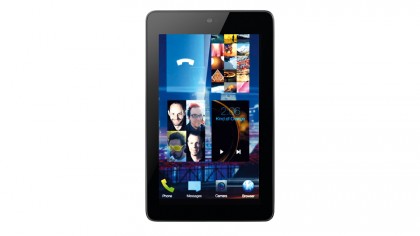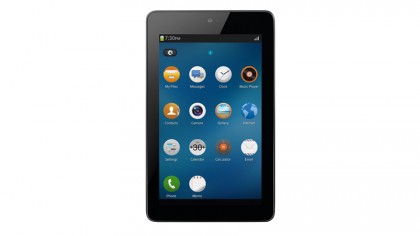Next-gen mobile OSes: what's in store?
A new frontier of Linux-based mobile operating systems
Perhaps, because of the more feature-filled system, Plasma Active was the only system we tested that made the Nexus 7 feel too small. The extra screen space on a nine or ten inch tablet would really help make the most of the environment, as would a good case and keyboard.
Sailfish
Rising out of the ashes of MeeGo.

Jolla, a Finnish company founded by former Nokia employees, is building a new mobile phone operating system using Qt technologies on top of the Mer platform. However, that is where the similarities with the Plasma Active system end. Sailfish (Jolla's system) is definitely a mobile phone OS with none of the more complex features of Plasma Active.
In a similar way to Ubuntu Touch, the main selling point is the user interface, and the designers and engineers at Jolla have been rethinking how we interact with our devices - like Canonical. Jolla has come up with a far richer set of controls than both Android and iOS use.
Perhaps, though, the two biggest areas of interest are the screen that shows the currently running apps, and the ability to build themes based on pictures. The first roughly takes the place of the Home screen in most other mobile OSes, but acts more like a window switcher with a little more power. The second allows you to change the interface based on the colours from the background picture. This theme permeates the apps running as well as the Home screen and app pickers.
Jolla are betting on the fact that people want to customise the colour schemes of their phones, and the first devices will come with interchangeable cases to let users pick and choose the colour. We have been unable to get our hands on one of the phones yet, but the videos online and the Sailfish VM that's part of the SDK show a slick Qt interface that we're sure will be a delight to use. Devices are expected to start shipping around the end of 2013.
Tizen
From the deep pockets of Samsung et al.
Get daily insight, inspiration and deals in your inbox
Sign up for breaking news, reviews, opinion, top tech deals, and more.

Most of the systems here are created by either small companies (such as Jolla's Sailfish), or organisations that are new to the mobile space (such as Mozilla's Firefox OS or Canonical's Ubuntu Touch). Tizen stands out as a glaring anomaly in that it's being built by such behemoths as Samsung and Intel who have come together to form the Tizen Association that's overseen by the Linux Foundation. If money and market clout are all it takes to break into the mobile OS market, then Tizen is sure of success.
However it's not, and for proof of this, you need look no further than the difficulties the combined powers of Microsoft and Nokia are having pushing Windows Phone on an uninterested market. The Tizen interface is clean and easy to use, but frankly, it's hard to see what it has to recommend it over existing products, unless perhaps if it performs well at the low-price end of the market.
Our cynical side is tempted to conjecture that the main purpose of Tizen is to help Samsung gain a better negotiating position over Google for Android. Our less cynical side is excited by the possibilities for Tizen as a powerful embedded solution.
The platform overview states "Tizen aims to introduce a robust unified experience across multiple devices - smartphone, tablet, Smart TV, PC and in-vehicle infotainment - with a focus on mobile platforms." We can't help but suspect that the success of the platform, if not the focus, will lie in things like TVs and in-vehicle entertainment systems. This is an area that, unlike mobile phones, is under served and an open source platform could really benefit both manufacturers and consumers.